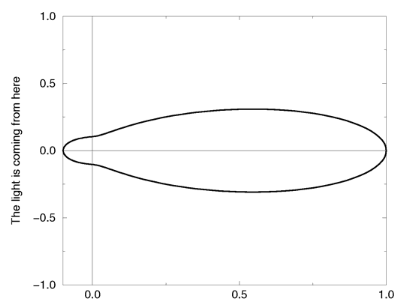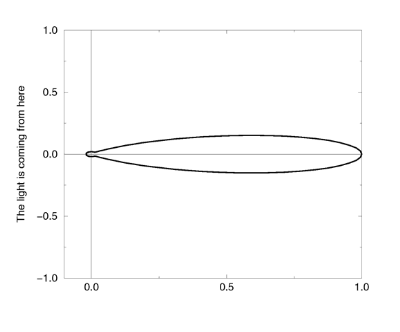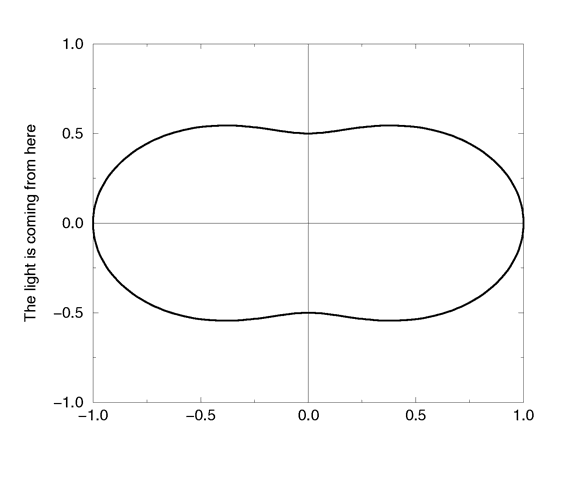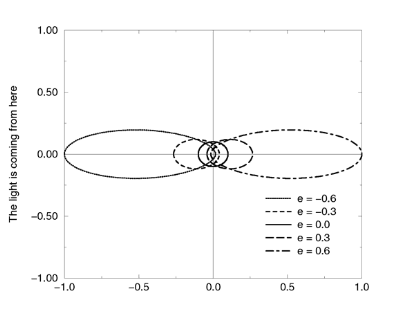6.8.1.3 Scattering
The syntax of a scattering statement is:
SCATTERING:
scattering {
Type, COLOR [ eccentricity Value ] [ extinction Value ]
}
The first float value specifies the type of scattering. This is followed
by the color of the scattered light. The default value if no
scattering statement is given is rgb<0,0,0> which
means no scattering occurs.
The scattering effect is only visible when light is shining on the media
from a light source. This is similar to diffuse reflection off
of an object. In addition to reflecting light, a scattering media also
absorbs light like an absorption media. The balance between how
much absorption occurs for a given amount of scattering is controlled by the
optional extinction keyword and a single float value. The
default value of 1.0 gives an extinction effect that matches the scattering.
Values such as extinction 0.25 give 25% the normal amount. Using
extinction 0.0 turns it off completely. Any value other than
the 1.0 default is contrary to the real physical model but decreasing
extinction can give you more artistic flexibility.
The integer value Type specifies one of five
different scattering phase functions representing the different models:
isotropic, Mie (haze and murky atmosphere), Rayleigh, and
Henyey-Greenstein.
Type 1, isotropic scattering is the simplest form of scattering because it is independent of direction. The amount of light scattered by particles in the atmosphere does not depend on the angle between the viewing direction and the incoming light.
Types 2 and 3 are Mie haze and Mie murky scattering which are used for relatively small particles such as minuscule water droplets of fog, cloud particles, and particles responsible for the polluted sky. In this model the scattering is extremely directional in the forward direction i.e. the amount of scattered light is largest when the incident light is anti-parallel to the viewing direction (the light goes directly to the viewer). It is smallest when the incident light is parallel to the viewing direction. The haze and murky atmosphere models differ in their scattering characteristics. The murky model is much more directional than the haze model.

The Mie "haze" scattering function

The Mie "murky" scattering function
Type 4 Rayleigh scattering models the scattering for extremely small particles such as molecules of the air. The amount of scattered light depends on the incident light angle. It is largest when the incident light is parallel or anti-parallel to the viewing direction and smallest when the incident light is perpendicular to the viewing direction. You should note that the Rayleigh model used in POV-Ray does not take the dependency of scattering on the wavelength into account.

The Rayleigh scattering function
Type 5 is the Henyey-Greenstein scattering model. It is based on
an analytical function and can be used to model a large variety of different
scattering types. The function models an ellipse with a given eccentricity e.
This eccentricity is specified by the optional keyword
eccentricity which is only used for scattering type five. The default
eccentricity value of zero defines isotropic scattering while positive values
lead to scattering in the direction of the light and negative values lead to
scattering in the opposite direction of the light. Larger values of e (or
smaller values in the negative case) increase the directional property of the
scattering.

The Henyey-Greenstein scattering function for different eccentricity values